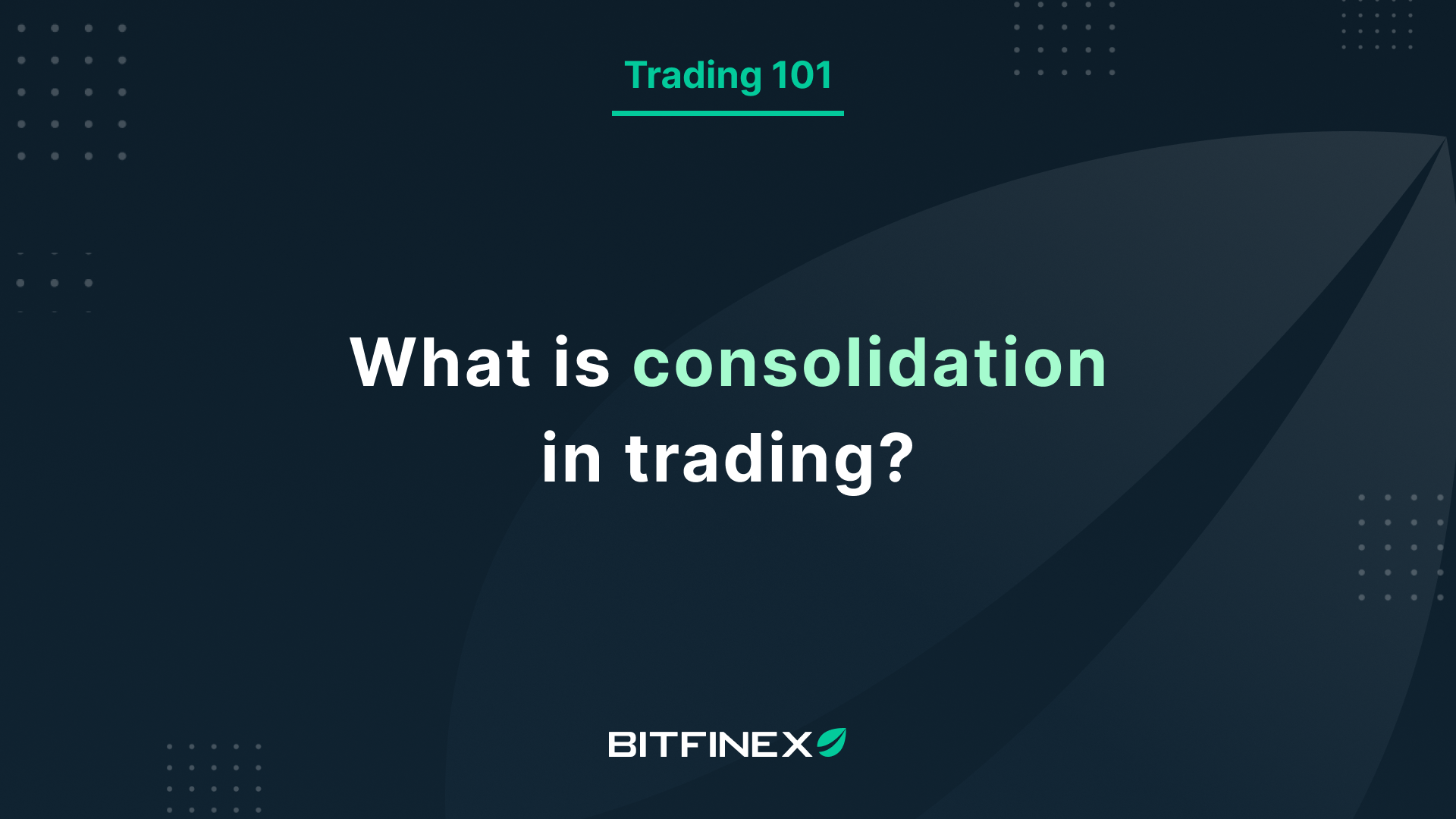
27 Aug Bitfinex Trading 101—Understanding Consolidation & The Polarity Principle
Some of the critical characteristics all traders should have besides a lot of self-control is definitely adequate trading knowledge. Among the basic knowledge that all traders need to know is consolidation and the polarity principle—what they are and why it is crucial to understand them.
Bitfinex Trading 101 series brings you educational content around crypto trading and the Bitfinex platform that will enrich your trading knowledge.
What is consolidation in trading?
Consolidation is a period when the price of an asset is moving within a limited range, or more familiar as sideways price action. In this period, the price direction is unclear as it doesn’t show any significant advancement in either upward or downward trends. One of the easiest ways to identify a consolidation period is when both support and resistance lines can easily be drawn on the price chart for that particular price movement period.
A consolidation period could last for minutes, hours, days, weeks, even months. Professional traders tend to use this period to assess the market and watch for any possible breakouts above the resistance level or below the support level. Some traders may decide to time out from their trading activities as there’s often less room for profit due to the tight range movement. Some others, however, may continue to trade with extra cautious and different strategies.
Why and when does a consolidation period take place?
There isn’t a definitive answer on why a consolidation period occurs, as it’s impossible to truly know what is happening with the market and why.
A consolidation period could take place in an uptrend or downtrend. It can be a trend continuation formation, which signals an extension of the preceding trend or a trend reversal formation, which signals a change from the preceding trend. In some instances, however, a consolidation period doesn’t lead to a breakout either way.
The Polarity Principle: The dynamic between supply & demand
The price movement of an asset is heavily affected by the dynamic between demand/buy and supply/sell of the asset in the market. However, there are times when the market has completely absorbed the buying or selling efforts. When this happens, a significant shift in the market sentiment usually takes place.
As mentioned in the support and resistance content, a support level is formed when demand is strong enough to keep the price from dropping further. But when the buying pressure behind a support level is fully absorbed by the market, traders are no longer interested in buying at this price level. This causes a major shift in the market sentiment. As a result, a support level will turn into a resistance level.
On the other hand, a resistance level is a level to which price has ascended yet struggled to break above. At this level, the selling pressure is strong enough to keep the price from climbing further. But when the selling behind a resistance level is fully absorbed by the market, traders no longer see it as an optimum point to take profit, rather as a good entry point due to the disappearance of the selling pressure. As a result, a resistance level will turn into a support level.
The Polarity Principle refers to the major shift in the market sentiment caused by a change in the dynamic between supply and demand of an asset.
Sign up to Bitfinex newsletter or subscribe to Bitfinex’s YouTube channel for more insightful content.



